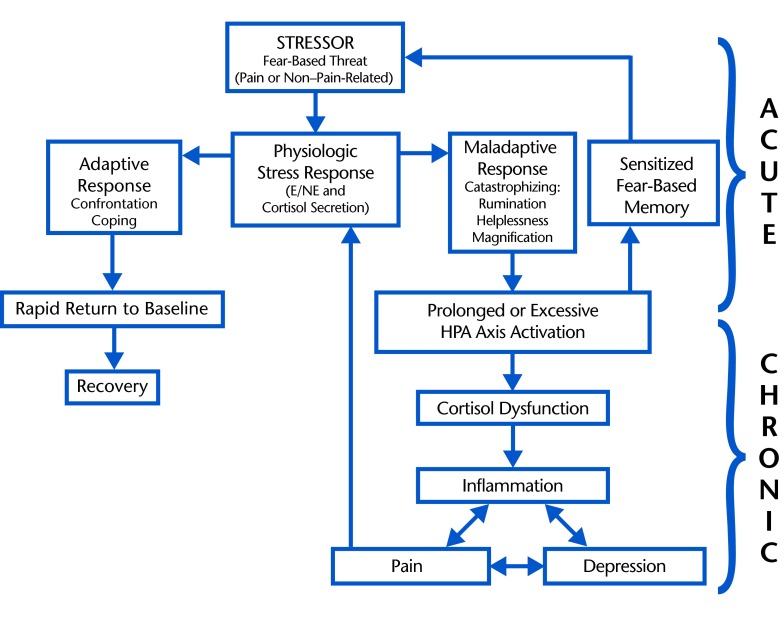Figure.
Proposed role of stress-related hypothalamic-pituitary-adrenal (HPA) axis activation in the transition from acute to chronic pain. Acute stress response: pain or non–pain-related stressor activates a normal physiologic stress response (short-term sympathetic release of epinepherine and norepinepherine [E/NE] followed by secretion of the anti-inflammatory hormone, cortisol). An adaptive coping response permits the return to normal levels of E/NE, cortisol, and inflammation; a maladaptive response causes excessive or prolonged cortisol secretion and creates a fear-based memory of the stressful stimulus that is sensitized and readily reactivated by future stressors. Chronic stress response: prolonged cortisol secretion (due to maladaptive coping response to acute stress) results in cortisol dysfunction. Cortisol dysfunction results in unmodulated inflammation following reactivation of the stress response, which may contribute to a cycle of inflammation, depression, and pain; pain is a stressor that may reactivate a proinflammatory stress response, now unmodulated due to cortisol dysfunction.

